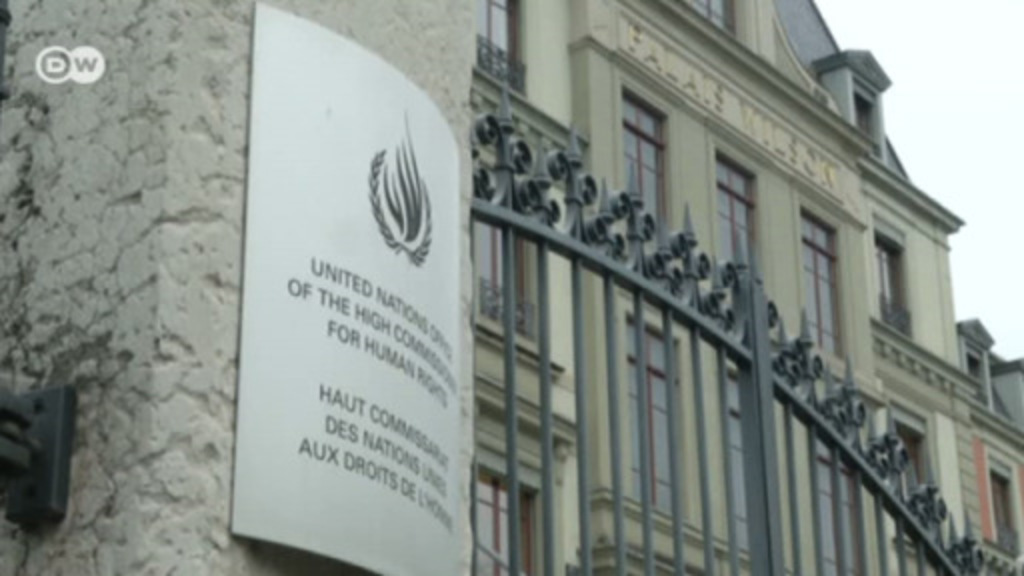News
Ulrich Wegener, German 'hero of Mogadishu,' dies aged 88
Wegener was the mastermind behind the creation of Germany's elite anti-terror unit GSG-9. He became a household name in West Germany after his leadership during a celebrated 1977 rescue operation.
Ulrich Wegener, the architect of Germany's elite anti-terror unit, the GSG-9, and widely known as the "hero of Mogadishu," has died aged 88.
Wegener died December 28, German daily Bild said Wednesday. Germany's interior ministry later confirmed the report.
The former brigadier general of West Germany's border police was "an outstanding police offer who accomplished so much for Germany's security," Interior Minister Thomas de Maizière said. "We will retain honorable memories of him."
Saving lives in Somalia
Wegener became a household name after he led a successful GSG-9 mission to free over 90 hostages from the hijacked Lufthansa airplane "Landshut" in the Somali capital of Mogadishu in October 1977.
Four Palestinians had hijacked the aircraft and demanded the release of 11 imprisoned members of the Red Army Faction (RAF), a notorious left-wing German terrorist group, in exchange for the hostages.
GSG-9 officers stormed the plane, killing three of the hijackers and freeing all 91 passengers without injury.
Three RAF prisoners — Andreas Baader, Gudrun Ensslin und Jan-Carl Raspe — commited suicide after the hostages were freed.
For his leadership, Wegener quickly became known as the "hero of Mogadishu."
Read more: Late confessions: Germany's RAF terrorists and repentance
Learning from the past
The Mogadishu operation was the culmination of Wegener's efforts to create Germany's first elite anti-terror troop.
Wegener had received the order to create the unit following the deaths of nine Israeli Olympic athletes during the 1972 Munich Olympics.
Palestinian terrorists had taken the athletes hostage and transported them to a nearby military airport in Fürstenfeldbruck. During the police rescue operation, all nine hostages and a German police officer were killed.
The fiasco convinced German authorities of the need to establish an elite group of police officers trained and equipped to combat terrorists and prevent future tragedies.
Read more: Lufthansa's hijacked 'Landshut' plane returns to Germany
'We did the work together'
Wegener remained with German police until 1988 when he left to help train Saudi Arabia's "Special Security Forces."
In a recent interview, the former policeman said "he was happy that we [the GSG-9] were able to show what we could do" during the 1977 Mogadishu operation. "We had trained for such an operation for years at German airports."
Wegener however never warmed to his popular title, according to German news outlet Die Welt/N24, saying recently: "we did the work together."
amp/rc (AFP, dpa)
DW recommends
Audios and videos on the topic
- Date 03.01.2018
- Keywords GSG 9, anti-terrorism, Ulrich Wegener, Mogadishu, Landshut, 1972 Munich Olympics
- Share Send Facebook Twitter Google+ More
- Feedback: Send us your feedback.
- Print Print this page
- Permalink http://p.dw.com/p/2qIsN
- Date 03.01.2018
- Keywords GSG 9, anti-terrorism, Ulrich Wegener, Mogadishu, Landshut, 1972 Munich Olympics
- Share Send Facebook Twitter Google+ More
- Send us your feedback.
- Print Print this page
- Permalink http://p.dw.com/p/2qIsN
















